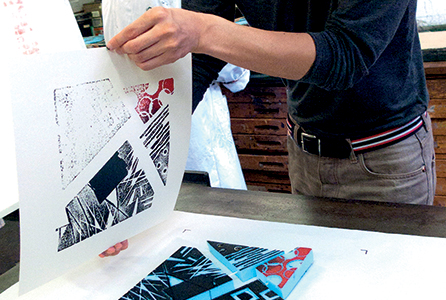
We could think about this as being one collective shift within the media sphere, influenced by the digitisation of our leisure and lives within our post millennial and on-demand characteristics”

With the evolution of innovative special-effects inks, a design can produce an even broader sensory experience with results that can be heard, felt, tasted, and smelt”

They truly culminate, powerfully, into something very contemporary and stylish”

(Above & below) Founded in 2006, Luma Studio screen prints limited editions and one-off work for artists, illustrators, and designers. It prints special finishes using fluorescent, metallic, iridescent, gloss, and conductive inks